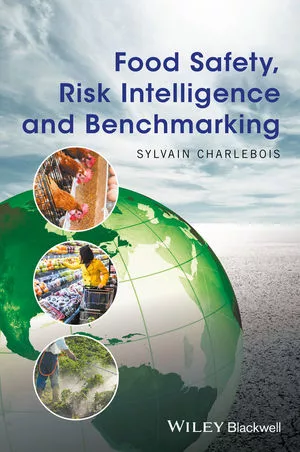Responding to FDA Letters
Tips on how to answer regulatory communications

If you have received a food safety-related letter from the U.S. Food and Drug Administration (FDA) requiring an immediate response, then the battle-proven advice in this article will be extremely helpful. If you are worried about receiving such a letter, then this article will be helpful in getting your organization better prepared. And if you think your organization will never get such a letter, then think again and read on.
This article offers proven suggestions on how to respond to an FDA Form 483, Warning Letter, or other similar regulatory correspondence. The objective is of course to address all of FDA’s concerns yet more importantly to aid in the management and improvement of your company’s food safety process. Responding to an FDA letter is very critical, carries the weight of law, has a very tight timeline for a response, and becomes public record. The outcome needs to be a response that is swift, substantive, and sustainable. The suggestions in this article are based on the many diverse interactions the author has had with both FDA and the U.S. Department of Agriculture and assimilate the learnings that came out of much trial and error, anger, stress, and success.
Do note that this article focuses on what to do after FDA has left (not on what to do during the inspection itself). This is the time when the management team may still be trying to cope with uncertainty and a sense of unfairness (maybe even anger) at the visit and its outcome. Although they may perhaps be useful as an organizational coping strategy, these feelings can get in the way of getting a response together immediately. There is a huge sense of urgency to respond. A future article can address what to do during the inspection itself.
Also note that this article shares general principles of the response letter itself (not the specific content of the letter). Being able to develop the proper content certainly requires an evaluation of root causes, skill at adjusting the strength of the response to the strength of the regulatory observations, and appropriate corrective actions. A future article can also address the details of what the content should be.
Above all else, developing a timely, thorough, and effective response takes substantial leadership and cross-functional consensus building. This is absolutely the primary basis for success in this endeavor. Said another way, the organization’s leaders must be aligned and collectively ensure that food safety behavior is changed. Lead the leaders!
First, a Little Background
For those unfamiliar with 483s and/or Warning Letters (perhaps because they’ve never received one), here is what FDA says:
483: FDA investigators are trained to ensure that each observation noted on the FDA Form 483 is clear, specific and significant. Observations are made when in the investigator’s judgment, conditions or practices observed would indicate that any food, drug, device or cosmetic has been adulterated or is being prepared, packed, or held under conditions whereby it may become adulterated or rendered injurious to health.
Warning Letter: When FDA finds that a manufacturer has significantly violated FDA regulations, FDA notifies the manufacturer. This notification is often in the form of a Warning Letter. The Warning Letter identifies the violation, such as poor manufacturing practices, problems with claims for what a product can do, or incorrect directions for use. The letter also makes clear that the company must correct the problem and provides directions and a timeframe for the company to inform FDA of its plans for correction. FDA then checks to ensure that the company’s corrections are adequate.
Looking for quick answers on food safety topics?
Try Ask FSM, our new smart AI search tool.
Ask FSM →
During and Right After an Investigation: Plan for the Response
It is a very smart strategy to obtain information in real time to increase the effectiveness of the eventual response. The point is to assume during an investigation that the company will get a regulatory letter; hence, the best time to start preparing for this is while the investigator is still on the premises.
During the investigation, you should strive to understand and clarify any observations that the investigator chooses to comment on. Do not stay silent. Of course, some investigators share nothing verbally during the investigation and instead wait for the exit meeting. And although this is within the rights of the investigator, it is not at all conducive to protecting consumers and improving public health because no dialogue is taking place. Thus, if nothing else, absolutely work to clarify the investigator’s observations during the exit meeting (i.e., your last chance!).
After the investigation and before a formal response is sent to FDA, speak with an FDA compliance officer as soon as possible. Give them a call since they are very unlikely to respond to anything in writing. Clarify deadlines and opportunities to delay if warranted. During this conversation, you may get some information to help with the breadth and depth of the response needed. Take note: If provided with just limited information (which is likely since FDA is very risk averse), do not assume that your response should be “limited” too.
The How-Tos of an Effective Response
What follows are critical principles to make sure that your response will be acceptable to FDA and, more importantly, will appropriately change and improve behaviors in your company. Understand that the latter is the real goal! Yes, the company needs FDA off its proverbial back, but the objective is to improve food safety behaviors, practices, documentation, and outcomes (e.g., the effectiveness of an environmental monitoring program). This is the goal that needs to be shared and embraced by all the organization’s leaders.
Adopting a mindset of simply giving FDA a response so they will go away is a slippery slope. When FDA comes back and most likely sees repeated offenses, then the company will be far worse off since it will be obvious that food safety behaviors have really not changed. Even worse, consumers may be at greater risk.
The critical principles described below are of equal priority and are essentially in chronological order. These may seem like a lot of steps, but do not underestimate the time and effort that must be applied. And all require a huge sense of urgency.
Find the Facts
Get the truth and all the facts, whether you like them or not. Eliminate opinions. Find out and document what was observed by the investigator, what the conditions were at the time of observation, and who said what. Review video recordings, if available.
Embolden the Employees
Talk to the people who were there, even if the investigator did not talk with them. What did they see and hear, not just from the investigator but also from the conditions, documents, and behaviors that were in play while the investigator was probing?
Study the SOPs
Read the company’s Standard Operating Procedures (SOPs) relevant to each observation. Were the SOPs really followed or not, and to what extent? If there was a deviation, why? Were there any unusual events or behaviors that might justify a “one-off”? But note: This is not likely to be an acceptable response to FDA. Are the SOPs still correct, relevant, and able to be followed? If an SOP needs to be changed in response to FDA’s observations, then all functions need to make sure that the changes can truly be followed and on all shifts (with proper training and documentation going forward). This cannot be overstated. There is nothing worse than offering FDA an “improved SOP” that no one follows. You will be found negligent in the next investigation.
Read the Rules
Identify the relevant FDA rules and regulations applicable to each observation. This is separate from whatever the investigator records on Form 483. Use your own experience and judgment; do not rely on those of the investigator. This should include Code of Federal Regulations references and guidance documents (e.g., those related to the Food Safety Modernization Act and FDA’s Listeria guidance).
Circle the Science
Determine what scientific principles are germane to each observation. Can sound scientific principles refute, counter, or dilute interpretations made by the investigator? Are there strong validation data on hand that can support a counterresponse? There is everything to be gained by documenting for the public record sound microbiological principles, lethality models, and applications of whole-genome sequencing technology that support your positions.
Engage the Experts
Get input from thought leaders who have this kind of practical regulatory experience. This would include legal experts, scientific thought leaders, regulatory consultants, and even friendly competitors and trade associations. Review prior responses that have been made public. And most importantly, engage your company leadership (lead the leaders)! Get 100 percent buy-in from company stakeholders and cross-functional leadership (everything fails if this step is missed). The likely and necessary food safety behaviors that need to be changed cannot be accomplished solely by one function, a rewrite of an SOP, or a verification document.
Bury the Bias
Remove emotions and defensive reactions from the written response. Remove egos and arrogance and respond as a third party to a third party. It is extremely important to recognize that only the written response will carry the day. The only people who actually witnessed a given observation were the investigator and you—and neither gets to speak to the compliance people who will read the 483 and the company response. Always remember that the primary (if not only) point is to protect the consumer and not to “satisfy FDA” or, worse, sully the FDA’s public reputation.
Tenor the Tone
Write the tone of the response so it is not too argumentative or biased. Be humble and conciliatory. However, this does not mean do not argue. The FDA letter and your response will be a matter of public record. Hence, you need to push back proportionately to the seriousness of the observation, and this pushback needs to be based on data, science, and regulations (and interpretations thereof). Write not only to the third-party regulatory body but also to your customers. You cannot and should not simply accept what is written by FDA, especially since they use such strong language to protect themselves should they end up in court. The 483 and Warning Letter are legal documents and become part of the company’s file with FDA—as will your response letter.
Summary
The above step-by-step approach ensures that with broad organization buy-in, the changes will improve behaviors and food safety outcomes, will address FDA concerns, and will be sustainable. The clock is ticking in many ways; identify the deadline and meet it at all costs.
To summarize, these are the criticalities:
- Time: You will run out of it, so make this an extremely urgent task for all leaders in the organization.
- Cross-functional agreement: All leadership functions need to support the changes wholeheartedly.
- Systemic corrective actions: What you choose to do has to change food safety-related behaviors, not just documents.
- Sustainable execution: What you choose to do has to work and has to become so sustainable that the new behaviors become habits.
Doing all the above will lead to less organizational stress, drive improved food safety behaviors, make the company and its people a better organization, reduce food safety risk, and please FDA.
Bob Lijana, M.Sc., has held director- and VP-level positions in food safety, quality, and operations for over 35 years at companies producing ready-to-eat foods, prepared meals, and pasteurized juices. He has a B.Sc. and an M.Sc. in chemical engineering from the Massachusetts Institute of Technology and the University of California–Berkeley, respectively.








